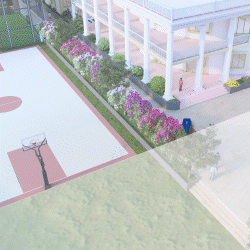Emergent Development Methodology in Bridges
We use Google Cloud Translation Services. Google requires we provide the following disclaimer relating to use of this service:
This service may contain translations powered by Google. Google disclaims all warranties related to the translations, expressed or implied, including any warranties of accuracy, reliability, and any implied warranties of merchantability, fitness for a particular purpose, and noninfringement.


In many areas of the country, there is a problem of not even having a suspension bridge on the river. There is also a separate problem of misusing state resources by building bridges where there is no need. In some places, the construction of bridges has been started where necessary, but there is another serious problem of incomplete completion.



Such problems seen in the context of the construction of bridges that are not on rivers/streams for people to move around are enough to understand how much the government's planning, budget allocation and implementation system is dependent on.
To understand how the construction style of development is going on, the suspension bridge of Kothimai-2 in Rupandehi, located on the Tinau river is a vivid illustration. The bridge ends on tall pillars on both sides. There is no other option in the vicinity to cross the river. Therefore, makeshift bamboo ladders have been built on both sides to climb the bridge. Children, elderly and disabled people cannot climb the stairs. If the hand or foot slips while climbing the ladder, it must be broken on the floor. This suspension bridge is not even under construction. The work was not done through a contractor, but the work was started three years ago through a consumer committee consisting of local residents who suffered from the misery of not having a bridge. After securing resources from Constituency Infrastructure Special Program, Kothimai Rural Municipality and others, the construction of the bridge was started with an estimated cost of 80 lakh 40 thousand rupees. Kothimai Rural Municipality has allocated 10 lakh rupees in the current financial year to carry out more work on the bridge, but there is confusion as to how to proceed. The old consumer committee is of the position that they should be in charge of more work anyway, the rural municipality is not confident about the old committee, it is in favor of handing it over to the new committee. This confusion should be resolved immediately and the access road to the suspension bridge should be made without rain. It is also a matter of shame that the suspension bridge could not be built even after three years.
There are many other examples of bridge construction stalling due to poor regulation and monitoring. Somewhere the river is built on one side and the bridge on the other side. There is an example in Gorkha where a concrete bridge was built in a place not connected by a road when the budget was reached. Ramsharan Basnet of Gorkha built a concrete bridge between Siranchok rural municipality-5 Jarewar and Gorkha municipality-3 Nareshwar when he was the former physical infrastructure minister in Gandaki province three years ago. But there is no road from the bridge to Jaravar, there is a field. There is a forest towards Nareshwar. People are crossing a suspension bridge nearby. The Commission for Investigation of Abuse of Authority conducted an investigation on this matter last year and concluded that the government had misappropriated about 5.5 million rupees by building a bridge where there was no road and changing the contract, design and location in a bad way. After that, the authority filed a case against three employees. But whoever built the bridge by allocating the budget to his farm, he did not face a case. In this way, while the state resources are being exploited by building bridges randomly, in some areas there is not even a suspension bridge, but the compulsion to cross the river in a risky way from Tuin has not gone away. Even after eight years have passed since the government announced that it would make a 'Tuin-free Nepal' within two years, the news of citizens losing their lives due to the collapse of the Tuin has been coming every year.
Bridges are being built where there is no need due to the distorted practice of choosing projects based on whims and allocating budgets on their own. In the places where it is necessary but not accessible to the people of that area, they have to cross the river/river by making bridges or bridges. Due to lack of honesty of consumer committee, builders and lax monitoring and regulation of related agencies, they have to travel dangerously by using ladders on abandoned bridges like Kothimai-2, Tinau river in Rupandehi. The solution to such problems is to follow the same method. From planning selection to budget allocation, construction contractor selection and monitoring, the work should be methodical. Whoever does not follow the law, he should be brought under the scope of legal action.
 प्रकाशित : फाल्गुन १४, २०८० ०७:२५
प्रकाशित : फाल्गुन १४, २०८० ०७:२५

 २६.१२°C काठमाडौं
२६.१२°C काठमाडौं


















